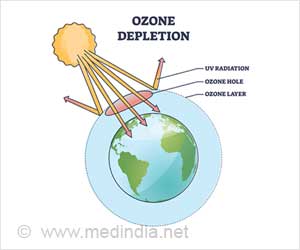A new model, developed by Eawag researchers, has shown that the contamination of groundwater with arsenic poses a risk to the health of millions of people, especially in the densely
Eawag researchers have developed a new model, which shows that the contamination of groundwater with arsenic poses a risk to the health of millions of people. Arsenic poisoning of groundwater is particularly high in Southeast Asia, especially in its densely populated river deltas that form the region’s lifeline.
Till date, no method was available for identifying high-risk areas without conducting costly sampling campaigns, but now, the new model allows vulnerable areas to be pinpointed using existing data on geology and soil properties.The new method has also allowed researchers to detect high-risk areas in regions where groundwater studies had not previously been conducted, such as in Myanmar and on Sumatra.
Arsenic is a geogenic contaminant, deriving from natural sources, which is dissolved in groundwater.
The team, led by geologist Lenny Winkel and environmental chemist Michael Berg, has described the method that enables high-risk areas to be identified relatively easily, without the need for expensive and time-consuming groundwater analysis.
For this purpose, researchers compiled existing geological data from Bangladesh, Myanmar, Thailand, Cambodia, Vietnam and Sumatra (Indonesia) to produce a uniformly classified map.
The data related only to surface sediments and soil properties; surprisingly, this combination of data permits sufficiently accurate conclusions to be drawn concerning chemical and physical conditions in groundwater.
Advertisement
In particular, young river deposits with organic rich sediments proved to be indicators of groundwater arsenic contamination.
Advertisement
Verification of the model using more than 1750 available groundwater data points from the Bengal, Mekong and Red River deltas showed that the predictions accorded well with reality.
However, in areas assigned a low risk by the model, the risk cannot be assumed to be zero.
"There is no such thing," Science Daily quoted Berg, as telling Nature Geoscience.
Berg added that, ultimately, even a refined model, e.g. including more data from deeper rock strata, could not serve as a substitute for analysis of water samples.
"But thanks to the maps, governments, local authorities or aid agencies can tell very quickly where it might be problematic to sink a well," he said.
The findings from Southeast Asia are part of the Water Resource Quality (WRQ) project, an Eawag research programme studying the occurrence of geogenic contaminants in groundwater worldwide.
The study is published in the journal Nature Geoscience.
Source-ANI
TAN/L












